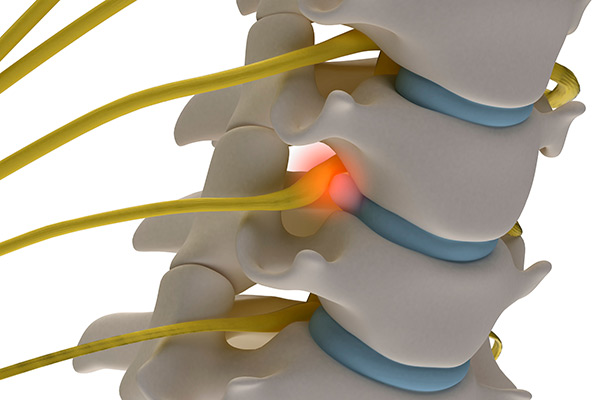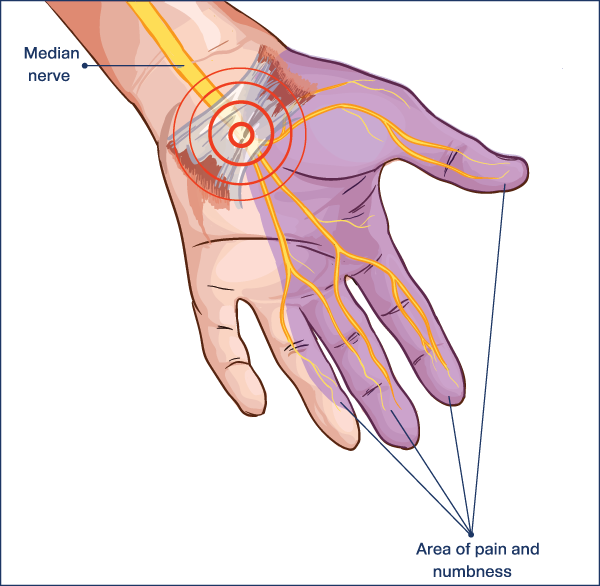Stop Your Hands Going Numb on the Bike
“How do you stop your hands going numb when you ride?” is one of the more frequent questions I get when performing bike fits. It happens to both mountain bikers and road cyclists alike. Thankfully this annoying problem is usually fixable. We need to look at both your body and your bike setup.
We know you will have a nerve or several nerves being compressed somewhere along their pathways. So we can usually narrow it down to 3 areas. Don’t forget it is possible to have more than one of these going on at once. Let’s start at the spine and work our way outwards so you can understand how to stop your hands going numb.
1. Stop Your Hands Going Numb: Look at Your Neck Position
As your nerves travel down your spinal cord from your brain they branch off and exit at each vertebral level. They come out of a space between the vertebrae called the Intervertebral Foramen. If you have a smaller intervertebral foramen then you are more likely to get compression on your nerve here. In turn this potentially results in a numb hand. Anatomically you may have a mild disc bulge in your neck or increased bony formation around the area that is taking up some of the nerve outlet space. Don’t panic even with compromised anatomy we can make significant changes.
Why Does it Happen on a bike?
When you are cycling your cervical spine is in extension (ie bending backwards). This position closes the intervertebral space where the nerves exit the spine. Consequently if you have a smaller intervertebral space at any level you are more likely to develop neural compression symptoms such as pins and needles or numbness. The lower and more aero your bike position is, the more cervical spine extension your neck will be in.
How Do We Fix It?
Firstly if you have stiff cervical or thoracic spine we need to work on that. Ideally when you extend your tilt your head backwards we want the movement to occur evenly throughout the cervical spine and thoracic spine. If you have stiff segments that move poorly then other segments will have to do extra movement, further closing down the adjacent intervertebral foramen. If this is the case, have a read of Jamie’s blog post on the Thoracic Wedge here.

In terms of bike position often we need to go away from that super aerodynamic low position. Try bringing the handlebars a little higher to make your torso more upright. Learn to look ahead with your eyes not your head to avoid extending your neck. Beware of poorly fitting glasses because they can make this more difficult. I often use the cue “push your sternum gently up and forward”. This gains extension through your thoracic spine instead of your neck. As a result you’ll have space around those pesky nerve outlets.
The other bike posture to be aware of is not locking your arms out. It may be that the handlebars are a bit too far away, or just habit, but when you lock your elbows your shoulders will roll up and forwards. This makes it difficult to do the previous cue of sternum gently up and forwards. Consequently limiting your thoracic extension and relying on more cervical extension.
So to recap:
- Loosen up your cervical spine and especially your thoracic spine
- Don’t lock your elbows out (might need to bring the handlebars a bit closer)
- Sternum up and forwards
- Don’t strive to be too aero
- Look up with your eyes not your head
2. Stop Your Hands Going Numb: Look at the Thoracic outlet
Thoracic Outlet Syndrome is where your nerves (and arteries to an extent on this occasion) get compressed after they have exited your neck and pass through your shoulder. The usual culprit is again being stiff through the thoracic spine, but also potentially having tight pecs. If your pec minor muscle too tight it can cause compression on the nerves passing underneath it causing your hand to go numb. There are specific orthopaedic tests that your physiotherapist can do to diagnose this if it is the case.
On this occasion you will need to work on all the aspects of part 1 but add in some pec stretches.
You may also need to improve your shoulder stabiliser strength so that you are less reliant on using your pec minor. This is trickier and needs some individualised assessment and tailored intervention from your physiotherapist.
Lastly, if you ride with a hydration pack or backpack be aware that the straps can dig in to the front of the shoulder. This can mimic thoracic outlet syndrome. If you think this is the case try riding without it then you may look at adjusting it or going with a different brand/fit. I recently changed hydration packs and couldn’t feel my right hand 40 minutes into a mountain bike race. Enough adjustments were made to get by but I’m still not finding it as comfy as my old one.
3. Stop Your Hands Going Numb: Look at Your Wrist
Less common these days is wrist related hand numbness. It can occur in 2 spots – your median nerve can get compressed in your carpal tunnel and your ulnar nerve can get compressed in your Guyon’s canal . I say these are less common because this was more often a poorly designed bike and handlebar thing. Bike companies have generally solved this problem for us, but lets troubleshoot it just in case.
Carpal tunnel syndrome
In cyclists, the majority of the time carpal tunnel is caused by the wrist being in too much extension (bent backwards). Your symptoms will be numbness in your thumb and first two fingers then half of your fourth finger. It is rare on a road bike. On a mountain bike make sure you put your brakes and shifters in a position that keeps your wrist flat.
Guyon’s Canal compression
If you feel numbness in your pinky finger and half your fourth finger you may be getting some compression of your ulnar nerve through your Guyon’s canal. This is a direct pressure issue. You are putting weight on or near the bone on the pinky side of your wrist called your pisiform. Your ulnar nerve is very close to it and effectively getting squished. You need to take the pressure off it somehow and place it on other parts of the hand.
It is rare on a road bike due to the shape of modern day drop bars. If you are getting it try different bar tape, different shaped handlebars or moving the hoods slightly.
On a mountain bike or flat bar roadie try different shaped grips. Changing the rise angle of your bars so to alleviate pressure on the outside of your wrists can also be effective.
Some bike gloves (road and mountain) have built in padding for this problem. You may find them helpful, however be aware that since there is more padding around the problem area sometimes the extra bulk actually exacerbates the issue.



